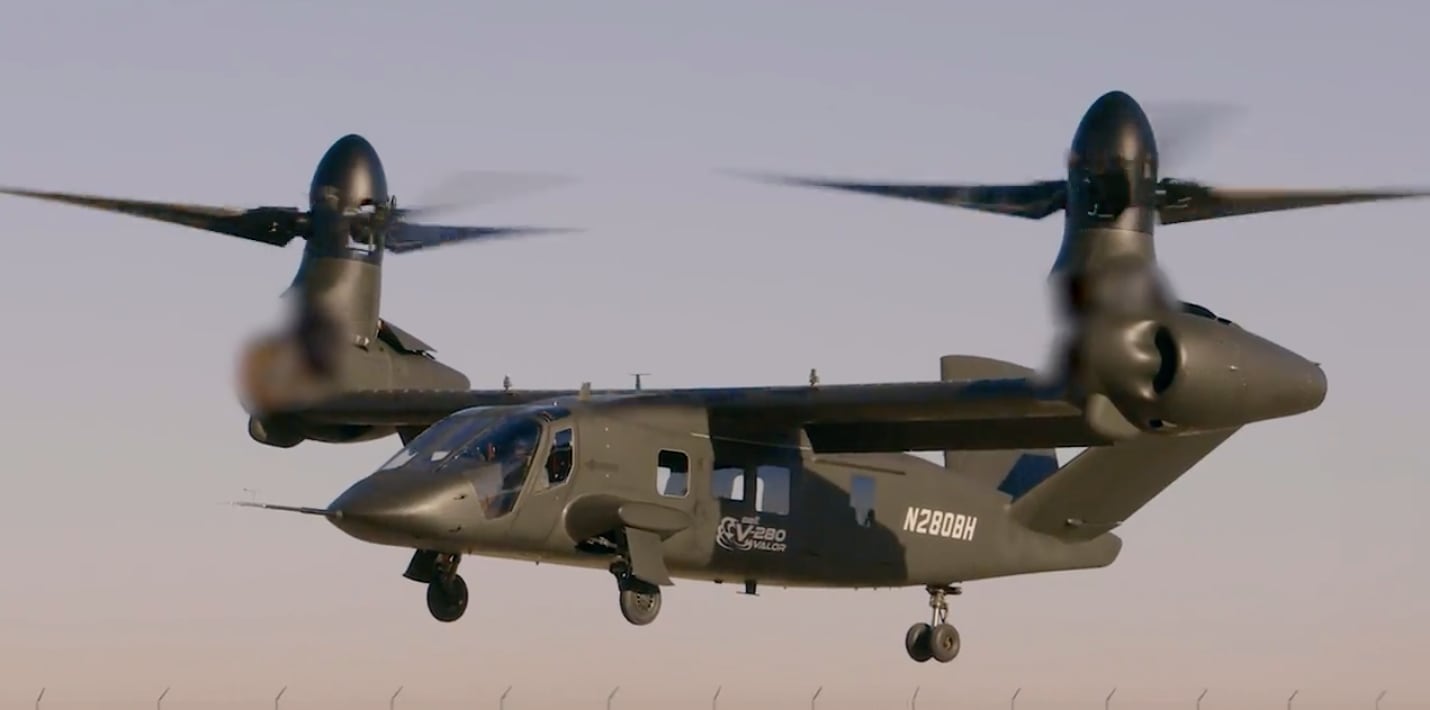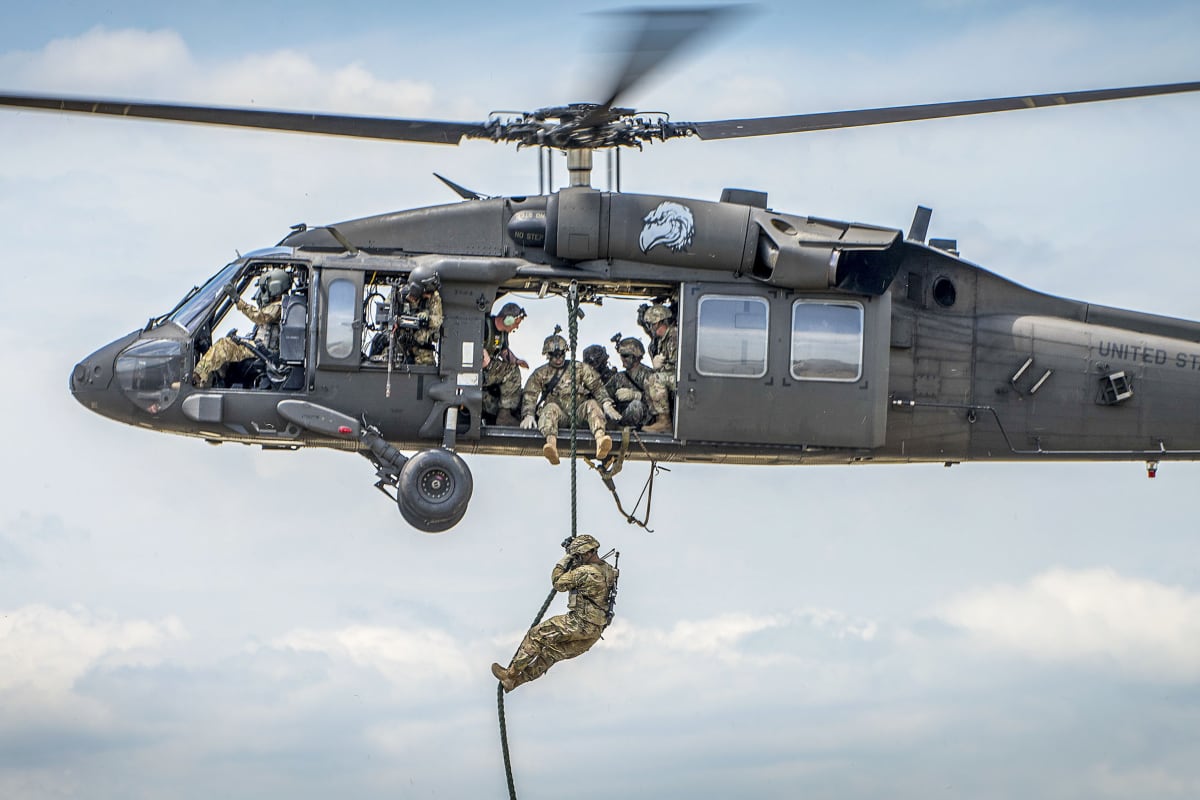Army aviators recently ran helicopters through missions with a kind of robot co-pilot for the first time, using technology a company says will be demonstrated in coming months on Black Hawk helicopters.
The pilots directed an “optionally piloted helicopter” through mission scenarios ranging from obstacle avoidance to contour flight, according to a release.
The pilots used the technology to move a modified commercial helicopter, the S-76B Sikorsky, known as Sikorsky Autonomy Research Aircraft or SARA, through the scenarios designed under a Defense Advanced Research Projects Agency program with Lockheed Martin.
RELATED

The automated capabilities are part of the Army’s larger Future Vertical Lift program, which aims to revolutionize how helicopters are employed by the services.
“Future vertical lift aircraft will require robust autonomous and optimally piloted systems to complete missions and improve safety,” said Chris Van Buiten, vice president of Sikorsky Innovations.
While personnel with the company have been developing and testing the technology for some time and flown more than 300 hours of autonomous flight, the Oct. 29 event at Fort Eustis, Virginia, was the first time non-company pilots operated the aircraft.
"These aviators experienced the same technology that we are installing and testing on a Black Hawk that will take its first flight over the next several months,” Buiten said.
The autonomous software and hardware, part of a tailorable package aimed to fit existing manned helicopters such as the Black Hawk, executed specific scenarios, including:
- Automated takeoff and landing: The helicopter autonomously executed takeoff, traveled to its destination, and autonomously landed.
- Obstacle avoidance: The helicopter’s LIDAR and cameras enabled it to detect and avoid unknown objects such as wires, towers and moving vehicles.
- Automatic landing zone selection: The helicopter’s LIDAR sensors determined a safe landing zone.
- Contour flight: The helicopter flew low to the ground and behind trees.
“We’re demonstrating a certifiable autonomy solution that is going to drastically change the way pilots fly,” said Mark Ward, Sikorsky chief pilot. “We’re confident that MATRIX Technology will allow pilots to focus on their missions. This technology will ultimately decrease instances of the number one cause of helicopter crashes: Controlled Flight Into Terrain (CFIT).”
DARPA Program Manager Graham Drozeski said that with the Aircrew Labor In-Cockpit Automation, or ALIAS, they’re trying to balance human and autonomous contributions through work with the software and pilots.
Lt. Col. Carl Ott, chief of flight test at the Army’s Aviation Development Directorate, echoed that comment, saying that the Army refers to the type of capability being pursued as “mission adaptive autonomy.”
“It’s there when the pilot needs the aircraft to fly itself, keep it free of obstacles, so the pilot can focus on more of a mission commander-type role, but the pilot’s also able to interact with system to re-suggest or re-route or re-plan on the fly,” Ott said.
Being able to do that seamlessly without shutting down the system are key capabilities for complex flight.

Dave Baden, the Marine Corps' Future Vertical Lift program manager, said the technology is important to reduce pilot workload.
“Let the mission crews concentrate on what they’re really there to do,” Baden said.
That includes medevac, close air support or other tasks.
This doesn’t replace pilots, though.
Ott was quick to mention that basic piloting skills and “air sense” to avoid obstacles and maneuver the aircraft remain crucial to piloting.
“And that just comes with time and experience,” Ott said.
The system includes a user interface that Ott said is easily replicable in a simulator for training.
Drozeski said that the next step will be to fully integrate the ALIAS system will go beyond just “wiggling the sticks” and to allowing the autonomy to operate like a co-pilot with access to the entire system.
Todd South has written about crime, courts, government and the military for multiple publications since 2004 and was named a 2014 Pulitzer finalist for a co-written project on witness intimidation. Todd is a Marine veteran of the Iraq War.




